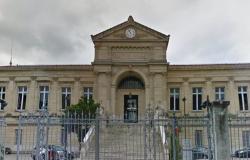Senegal extracted the first barrel of oil from the Sangomar field whose reserves are estimated at around 630 million barrels of crude oil and 2.4 Tcf (113 billion Nm3) of natural gas. To ensure that this windfall benefits the country, the National Committee of the Initiative for Transparency in the Extractive Industries (Cn-Itie) invites the State of Senegal to cultivate transparency, accountability and traceability.
The first barrel of oil released from the Sangomar wells propels Senegal into the circle of oil-producing countries. The National Committee of the Initiative for Transparency in the Extractive Industries (Cn-Itie) welcomes this. But remaining in its role, the Itie is charting the path forward for the government. “The Cn-Itie recommends that the State of Senegal continue to insist on the proper distribution and supervision of the management of revenues from oil and gas exploitation,” declares the body led by Oulimata Sarr. Itie also invites the State of Senegal “to carry out periodic and exhaustive disclosure of essential information with a view to guaranteeing the traceability of oil and gas revenues in the State Budget”.
In its press release which recalls the genesis of Senegal’s oil adventure, Itie emphasizes transparency, traceability and royalties. As soon as they came to power, the new authorities announced the audit of the oil costs of the Sangomar and Grand Tortue Ahmeyim projects. The Itie encourages “the authorities to finalize” these missions dedicated to the audit. But, it also calls on the “Ministry of Energy, Petroleum and Mines, and the Petrosen Group to disclose how they track and verify the accuracy of production and export data.” Responsible for “policing” the exploitation of mining resources in the country, the Itie also invites the operator Woodside Energy, “in the name of environmental transparency, to disclose figures on greenhouse gas (GHG) emissions. in accordance with existing principal disclosure standards.
As a reminder, Senegal became an oil producer thanks to the reserves of the Sangomar project, located 90 km south of Dakar and developed by the operating company Woodside Energy and Petrosen. These reserves are estimated at around 630 million barrels of crude oil and 2.4 Tcf (113 billion Nm3) of natural gas. With 82% of the shares in the Rufisque, Sangomar offshore and Sangomar deep offshore blocks, Woodside remains in the majority, while Senegal holds 18% of the shares via Petrosen, a national company 100% owned by the State of Senegal.
Under the signed agreements, the State’s shares will vary according to the defined daily production. And the financial windfall from this exploitation has already been the subject of a revenue distribution law, recalls the Itie, emphasizing that “a maximum of 90% of revenues from the oil and gas sector will be allocated to the general budget, and a minimum of 10% will be dedicated to funding the Intergenerational Fund. The surplus revenue resulting from the difference between projected revenue and that actually collected will constitute the Stabilization Fund and will be reconciled at the end of each quarter.
#Senegal






